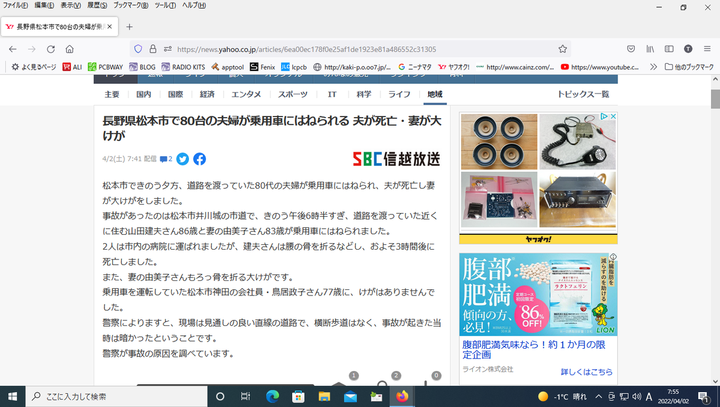今日の謎日本語
***************************************************
トランジスタは4個しかありませんし、増幅率はたったの40倍です。
**********************************************************
率は 「倍」での表現しない。 小学校3年の算数。理系出身であれば間違えない。こんな記述で行政に差し出しら 書類がその場で突っ返される。 敗戦直後の刊行本からして和訳時に間違えている。
増幅具合を「増幅率と文字表現しているsiteをみたら、それは???と診て正しいだろう」。ぱっと調べて20 siteあった。ご丁寧にそれをpdfにて公開中のは、物理計算もおまけで間違っている。エンジニアとしてはoutだろう。
*****************************************
・比(ひ、英: ratio)とは、2つ(または3つ以上)の数の関係を表したもの。数 a, b について、その比は a:b で表され、「a対b」とよむ。a を前項、b を後項(こうこう)という。
・パーセント(英: percent, percentage, %)、百分率(ひゃくぶんりつ)は、割合を示す単位で、全体を百として示すものである。
hFEとはベース電流とコレクタ電流の比の事 ここ。
ratio と パーセント(英: percent, percentage, %)がまぜこぜになったsiteが主流だ。 そうとうにオツムが弱い。
**********************************************************
刊行本からの引用。これは戦前の米国資料。ratio 表現だが、 オツムの弱いヒトに掛かるとpercentに進化するようだ。 そりゃ、基礎ができなきゃねえ、、日本の後進国入りは当然。
The definitions of the two tube factors derived in the preceding
sections are repeated here for review:
%マークは不存在。もともとpercentの文字列はない。ratio表現しかできない分野を扱っているので、統計概念の入る余地はない。 base文献でも % 表現でない。こんな小学生でも間違えない水準を「 増幅率 」と公開するオツムはかなり悪い。 悪意があって増幅率と表現したことも判明する。
率と訳したおっさん(恐らく1927年ころ) が駄目駄目。 わざと正しくない事を刷り込ますのも日本ではあたりまえです。
トランジスタ発明後は、その悪意に気付いて1973年代ころから増幅度と呼んでいる。日本語では、増幅率 が 増幅度に出世している。 電気式を正しく訳すチカラがないので、日本は米国に負け続ける。
*****************************************
1946年刊行本から引用
TRANSCONDUCTANCE (Gm) = Mu / Rp (answer in MHOS-pronounced "Mose")
Here is an example of this-suppose that a triode has a Mu of 40, and an Rp of 20,000 ohms. Substituting in the equation and solving-
Gm = 40 / 20,000
Gm = 0.002 mho conductance
Because such a number as .002 mho is difficult to use, and the tranconductance of all tubes is small, it is a common practice to multiply the MHO by 1,000,000 and call the new number the MICROMHO. Thus 0.002 mho will become-
0.002 X 1,000,000 = 2,000 MICROMHOS conductance.
For most vacuum tubes, the transconductance is in the order of a few thousand micromhos. It is desired that the vacuum tube have a LARGE Mu and a SMALL Rp in order that it may have a high transconductance.
***************************************************
hFE of a transistor is the current gain or amplification factor of a transistor.
hFE (which is also referred to as β) is the factor by which the base current is amplified to produce the amplified current of the transistor. The unamplified current is the base current, which then undergoes amplification by a factor of hFE to produce an amplified current which flows through the collector and emitter terminals.
A transistor works by feeding a current into the base of the transistor. The base current is then amplified by hFE to yield its amplified current. The formula is below:
IC= hFEIB=βIB
So if 1mA is fed into the base of a transistor and it has a hFE of 100, the collector current will be 100mA.
上記のようにhfeは ratio。「hFE と hfe どの表記が正しいのか?」を1920年代本から探っている状態。



